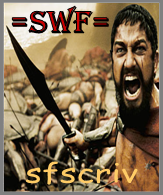Post by sfscriv on Mar 16, 2013 13:46:46 GMT 1

The Battle of the Bulge which occurred from 16 December 1944 – 25 January 1945 was a major German offensive launched through the densely forested Ardennes region in Belgium, and France and Luxembourg on the Western Front towards the end of World War II.
Germany's goal for these operations was to split the British and American Allied line in half, capturing Antwerp and then proceed to encircle and destroy four Allied armies, forcing the Western Allies to negotiate a peace treaty in the Axis Powers' favor. Once accomplished, Hitler could fully concentrate on the eastern front.
Near-complete surprise against a weakly defended section of the Allied line was achieved during heavy overcast weather, which grounded the Allies' overwhelmingly superior air forces. Fierce resistance around the town of Hofen and around Bastogne blocked German access to key roads needed for success. This threw the German timetable behind schedule. Allied reinforcements, including General George S. Patton's Third Army, and improving weather conditions permitted air attacks on German forces and supply lines stopping the offensive.
Allied Forces: 4 infantry divisions & 1 armored division
83,000 men, 242 tanks, 182 armored vehicles, 394 artillery pieces
German Forces: 8 infantry divisions & 5 armored divisions
200,000 men, 340 tanks, 280 armored vehicles, 1,600 artillery pieces
Heavy snowstorms engulfed parts of the Ardennes area. On 16 December 1944, at 5:30 A.M., the Germans began the assault with a massive, 90-minute artillery barrage using 1,600 artillery pieces across an 80 miles (130 km) front on the Allied troops facing the 6th Panzer Army. As the Americans fell back, they blew up bridges and emptied fuel dumps, delaying the Germans and denying them critically needed fuel.
Otto Skorzeny successfully infiltrated a small part of his battalion of disguised, English-speaking Germans behind the Allied lines. Although they failed to take the vital bridges over the Meuse, their presence caused confusion. Checkpoints were set up all over the Allied rear, greatly slowing the movement of soldiers and equipment.
The main thrust in the south was delivered by all attacking divisions increasing the pressure on the key road centers of St. Vith and Bastogne. Panzer columns took the outlying villages and widely separated strongpoints in bitter fighting, and advanced to points near Bastogne within four days. The 101st Airborne Division (reinforced by elements from the 9th and 10th Armored Divisions) reached Bastogne by truck on the morning of 19 December. There was a fierce defense of Bastogne. The panzer columns encircled Bastogne on 20 December.
After fighting against German defenses, Gen. Eisenhower realized that the Allies could destroy more German forces when they were out in the open and on the offensive than if they were on the defensive. Gen. Eisenhower told his generals, "The present situation is to be regarded as one of opportunity for us and not of disaster..."
Eisenhower asked Patton how long it would take to turn his Third Army (located in northeastern France) north to counterattack. Patton replied that he could attack with two divisions within 48 hours, to the disbelief of the other generals present.
In Bastogne by 22 December, artillery ammunition was restricted to 10 rounds per gun per day. The weather cleared the next day and supplies (primarily ammunition) were dropped over four of the next five days.
Despite determined German attacks the Bastogne perimeter held. The German commander requested Bastogne's surrender. The acting commander of the 101st responded with, "Nuts!"
By 24 December, the German advance was effectively stalled short of the Meuse River. British units were holding the bridges at Dinant, Givet, and Namur. The Germans had outrun their supply lines, and shortages of fuel and ammunition were becoming critical.
Patton's Third Army battled to relieve Bastogne and the lead element reached Bastogne on 26 December.
Allied Forces: 90,900 killed, wounded, and captured
German Forces: 84,800 killed, wounded, and captured



